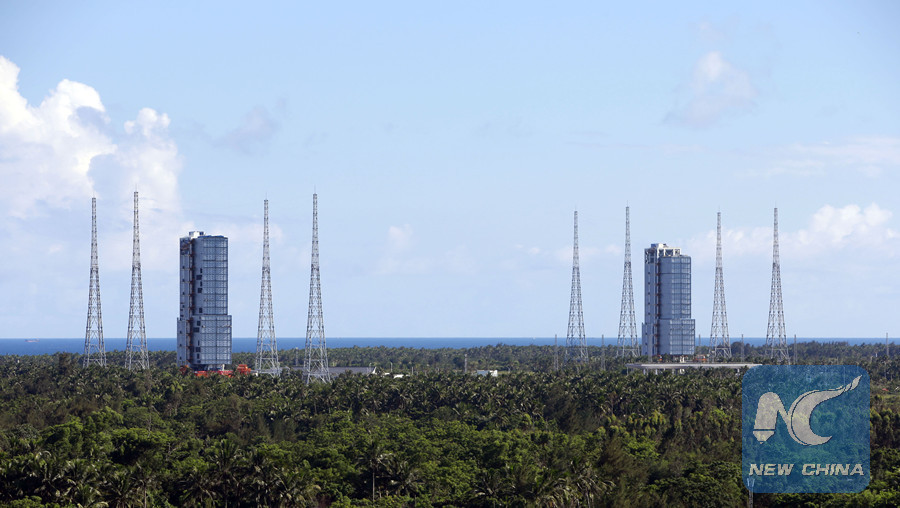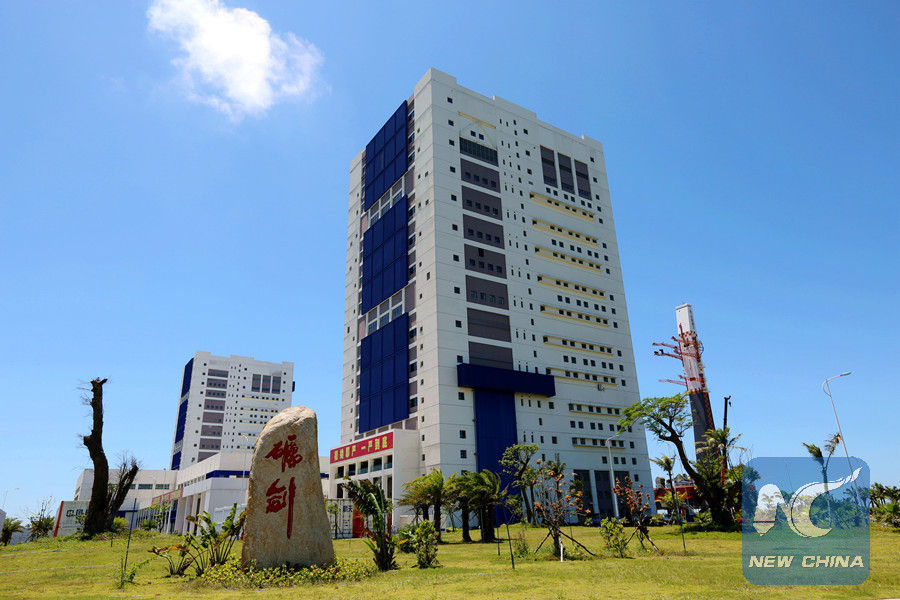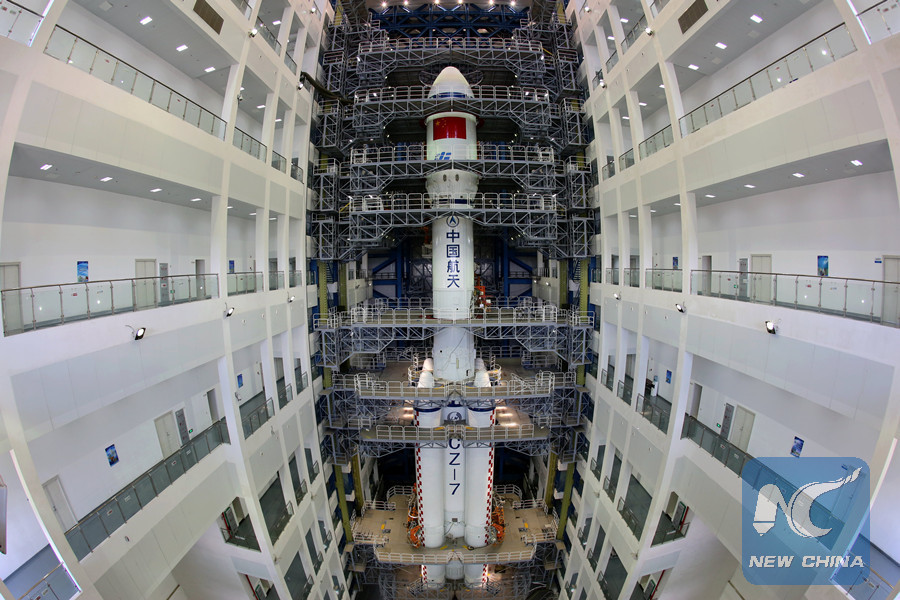
Wenchang Satellite Launch Center, June 22, 2016. (Xinhua/Zeng Tao)
BEIJING, June 24 (Xinhua) - On the northeast coast of China's tropical island, the country's fourth satellite launch center is preparing for lift off. If the small city of Wenchang was previously known to the world at all, it was for coconuts and a signature chicken dish. It is from here that, all being well, China's new generation Long March-7 carrier rocket will begin its first mission in the next few days.
The launch is scheduled for between Saturday and Wednesday. All of the city's hotel rooms -- enough for 80,000 people -- are booked out and there are eight viewing areas for space fans to observe the spectacle.
It took five years to build the center which was completed in November 2014. It covers an area of 20 sq km, featuring two launch pads and a science theme park catering to young space science enthusiasts. The operational part of the site is divided into three areas: transfer, test, and launch. Coconut groves, wetlands and ponds are scattered here and there.

The two launch pads in Wenchang Satellite Launch Center, June 23, 2016. (Wang Yongzhuo)
The two launch pads, 600 meters from the beach, have 92 meter and 86 meter gantries. Over 80 control and test rooms provide all-around technical support. Under each launch pad is a diversion ditch, which allows the huge amount of heat generated during the launch to dissipate.

The two assembly and testing buildings, June 23, 2016. (Xinhua/Zeng Tao)
Apart from the launch pads, the most outstanding structures in the center are the assembly and testing buildings. Standing 3.5 km from the sea, the two have one thing in common: immensity.
The taller one, 99 meters high, accommodates the heavy-lift Long March-5. It has 14 floors above ground and one underground. Its steel door, 81 meters high, is Asia's largest. The home of the medium-lift Long March-7, is slightly smaller but still impressive.

Long March-7 carrier rocket inside the assembly and testing building, June 23, 2016. (Xinhua/Zeng Tao)
China's fourth launch site, Wenchang will be used to dispatch satellites, large space stations and deep-space probes. It is designed to handle up to 10-12 launches a year. The planned space station and all attendant cargo and service launches will be handled by Wenchang.
China's three other launch bases -- Jiuquan, Xichang and Taiyuan -- are located in sparsely-populated inland areas. Wenchang was specially selected for its low latitude: only 19 degrees north of the equator.
The lower the latitude, the larger the centrifugal force and consequently the lower the launch cost. As long ago as 2007, Chinese Academy of Engineering carrier rocket expert Long Lehao declared that, "Hainan is close to the equator, so much energy could be saved if a satellite base was built there."

Long March-7 carrier rocket is transferred vertically to the launch pad in Wenchang, south China's Hainan Province, June 22, 2016. (Xinhua/Zeng Tao)
Satellites launched from low latitudes are expected to have a longer service life as a result of the fuel saved by a shorter maneuver from transit to geosynchronous orbit. That extra fuel can later be used to regulate and sustain orbit.
Wenchang's latitudinal advantages will allow the payload to be increased by more than 300 kg, 7.4 percent more than from any of the other three centers. That translates into a saving of 6 million U.S. dollars each launch. The current world price for rocket payload is about 20,000 U.S. dollars per kg.
Another benefit of the coastal center is that rockets will pass over open sea for up to 1,000 km, which avoids the danger of burning wreckage falling into residential areas.
Moreover, coastal Wenchang can receive deliveries of modules of large spacecraft by sea, while the other launch centers are all landlocked in remote plateau and mountainous regions that can only be reached by rail.

One of the two launch pads, June 23, 2016. (Xinhua/Zeng Tao)
However, every day is not a sunny one in low-altitude coastal areas with typhoons and thunderstorms constant threats. Wenchang's designers have used new technology to protect the launch ground against the ravages of wind and rain.
Unlike the steel structure of the launch pad at the Jiuquan center, the structure in Wenchang is made of both steel and reinforced concrete. Since 2009 when construction began, the center has withstood eight typhoons, including Rammasun in 2014, the strongest in 41 years.
Wenchang sees more than 100 days of thunderstorms each year. To deal with this threat, four 105-meter steel lightning conductors surround each launch pad, effective against 98.6 percent of thunderstorm, much higher than the 90 percent in other domestic launch centers.
A special anti-corrosion dope is used on metal surfaces to protect against Wenchang's moist, salty environment.

